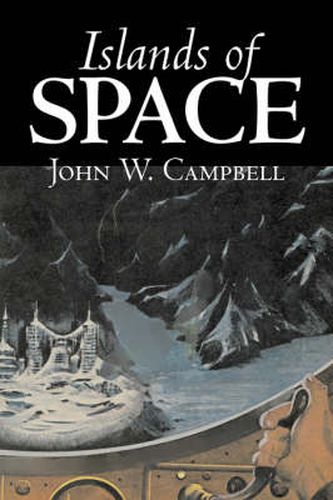Readings Newsletter
Become a Readings Member to make your shopping experience even easier.
Sign in or sign up for free!
You’re not far away from qualifying for FREE standard shipping within Australia
You’ve qualified for FREE standard shipping within Australia
The cart is loading…






This title is printed to order. This book may have been self-published. If so, we cannot guarantee the quality of the content. In the main most books will have gone through the editing process however some may not. We therefore suggest that you be aware of this before ordering this book. If in doubt check either the author or publisher’s details as we are unable to accept any returns unless they are faulty. Please contact us if you have any questions.
Arcot, Wade, Morey, and their computer, Fuller, put together a ship which will travel faster than light … they give us what may have been the first space-warp drive. The concept was simple; to make it plausible wasn’t – unless you were John Campbell.
With this out-of-space drive they hightail it among the stars. They locate the fugitive planets of the Black Star … find a frozen cemetery-world of a lost race … then head out for another galaxy … and wind up in a knock-down-drag-out interplanetary war in the other galaxy.
– P. Schuyler Miller, Astounding Science Fiction
*
John W. Campbell first started writing in 1930 when his first short story, When the Atoms Failed, was accepted by a science-fiction magazine. At that time he was twenty years old and still a student at college. As the title of the story indicates, he was even at that time occupied with the significance of atomic energy and nuclear physics.
For the next seven years, Campbell, bolstered by a scientific background that ran from childhood experiments, to study at Duke University and the Massachusetts Institute of Technology, wrote and sold science-fiction, achieving for himself an enviable reputation in the field.
In 1937 he became the editor of Astounding Stories magazine and applied himself at once to the task of bettering the magazine and the field of s-f writing in general. His influence on science-fiction since then has been great. Today he still remains as the editor of that magazine’s evolved and redesigned successor, Analog.
$9.00 standard shipping within Australia
FREE standard shipping within Australia for orders over $100.00
Express & International shipping calculated at checkout
This title is printed to order. This book may have been self-published. If so, we cannot guarantee the quality of the content. In the main most books will have gone through the editing process however some may not. We therefore suggest that you be aware of this before ordering this book. If in doubt check either the author or publisher’s details as we are unable to accept any returns unless they are faulty. Please contact us if you have any questions.
Arcot, Wade, Morey, and their computer, Fuller, put together a ship which will travel faster than light … they give us what may have been the first space-warp drive. The concept was simple; to make it plausible wasn’t – unless you were John Campbell.
With this out-of-space drive they hightail it among the stars. They locate the fugitive planets of the Black Star … find a frozen cemetery-world of a lost race … then head out for another galaxy … and wind up in a knock-down-drag-out interplanetary war in the other galaxy.
– P. Schuyler Miller, Astounding Science Fiction
*
John W. Campbell first started writing in 1930 when his first short story, When the Atoms Failed, was accepted by a science-fiction magazine. At that time he was twenty years old and still a student at college. As the title of the story indicates, he was even at that time occupied with the significance of atomic energy and nuclear physics.
For the next seven years, Campbell, bolstered by a scientific background that ran from childhood experiments, to study at Duke University and the Massachusetts Institute of Technology, wrote and sold science-fiction, achieving for himself an enviable reputation in the field.
In 1937 he became the editor of Astounding Stories magazine and applied himself at once to the task of bettering the magazine and the field of s-f writing in general. His influence on science-fiction since then has been great. Today he still remains as the editor of that magazine’s evolved and redesigned successor, Analog.